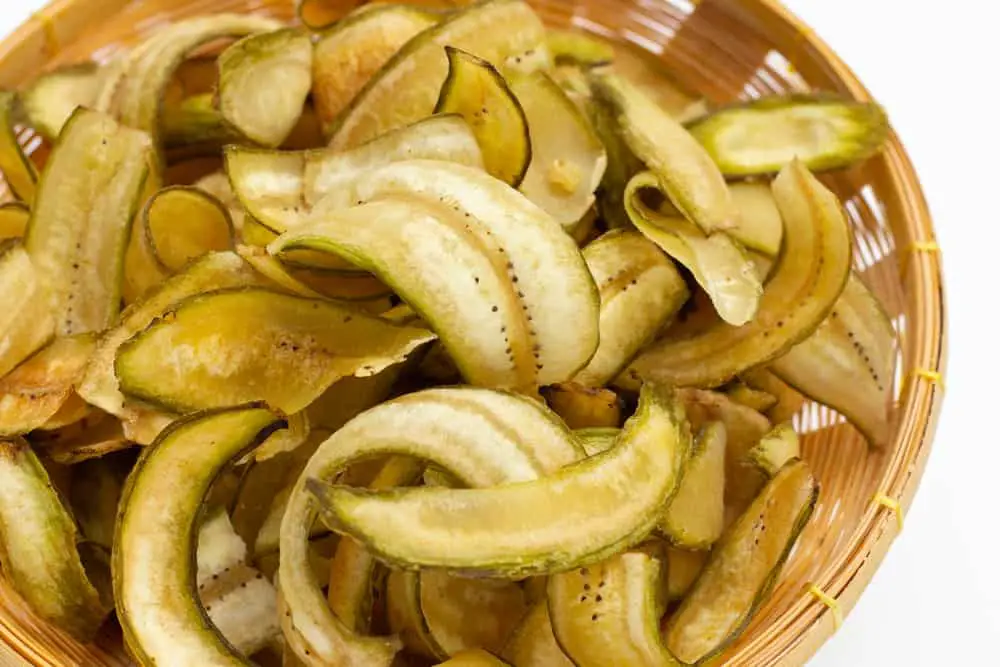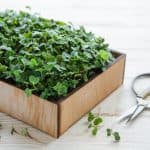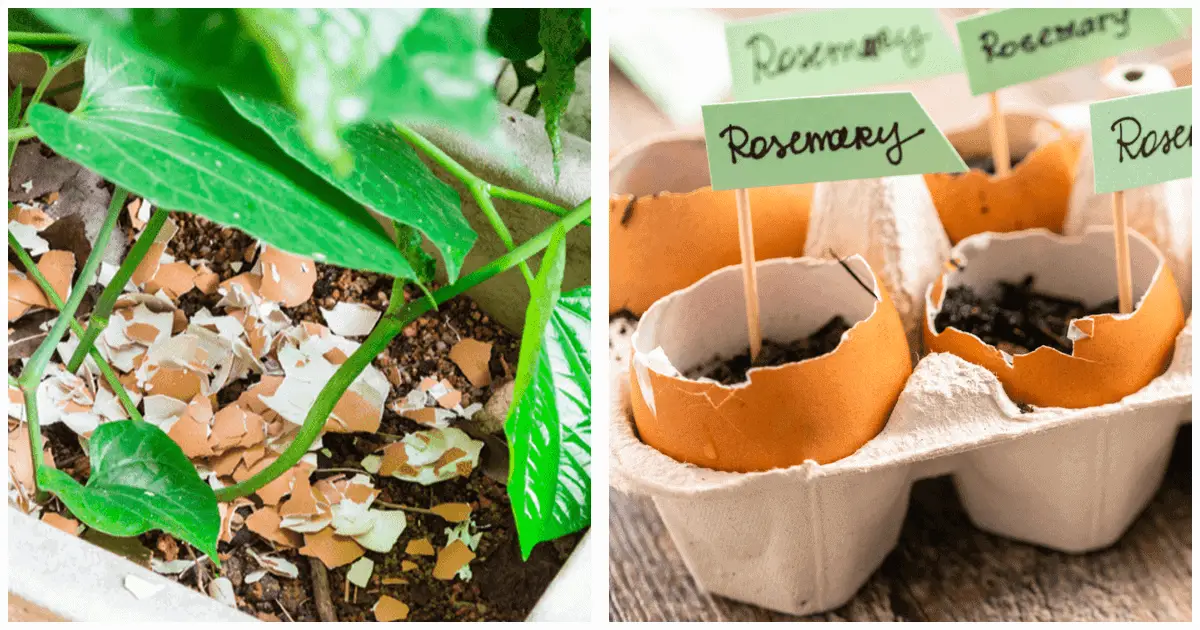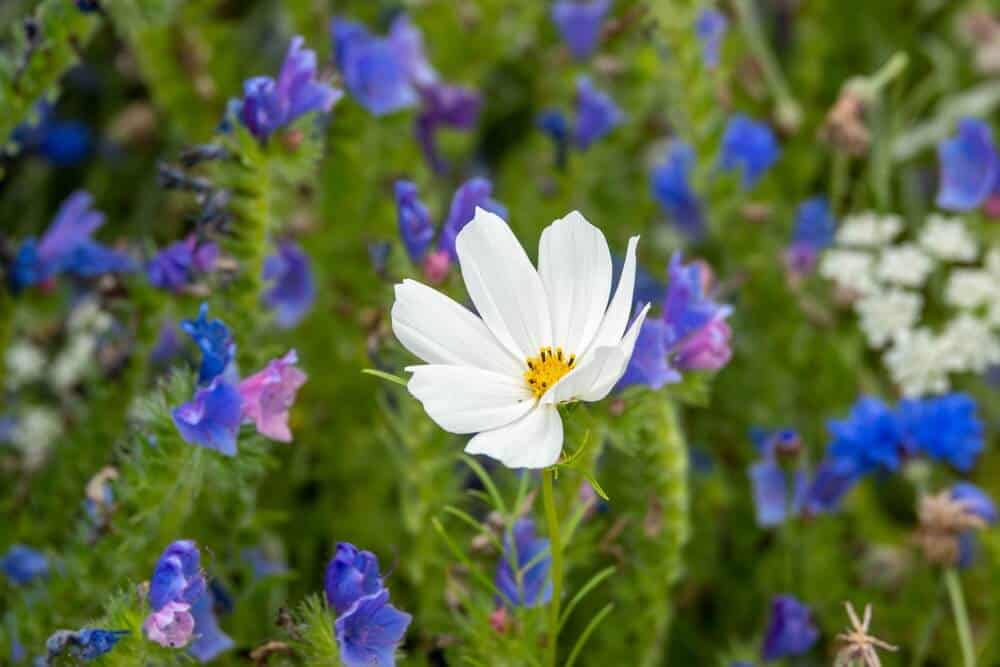Bananas are delicious in baked goods and smoothies, yet you are left with significant peel waste.
Instead of throwing away the peels, they can be used to provide nutrition in your garden.
By using banana peels in your garden, and even potted plants, you will save money and reduce landfill waste.
Check out these amazing uses below!
Using Banana Peels In The Garden
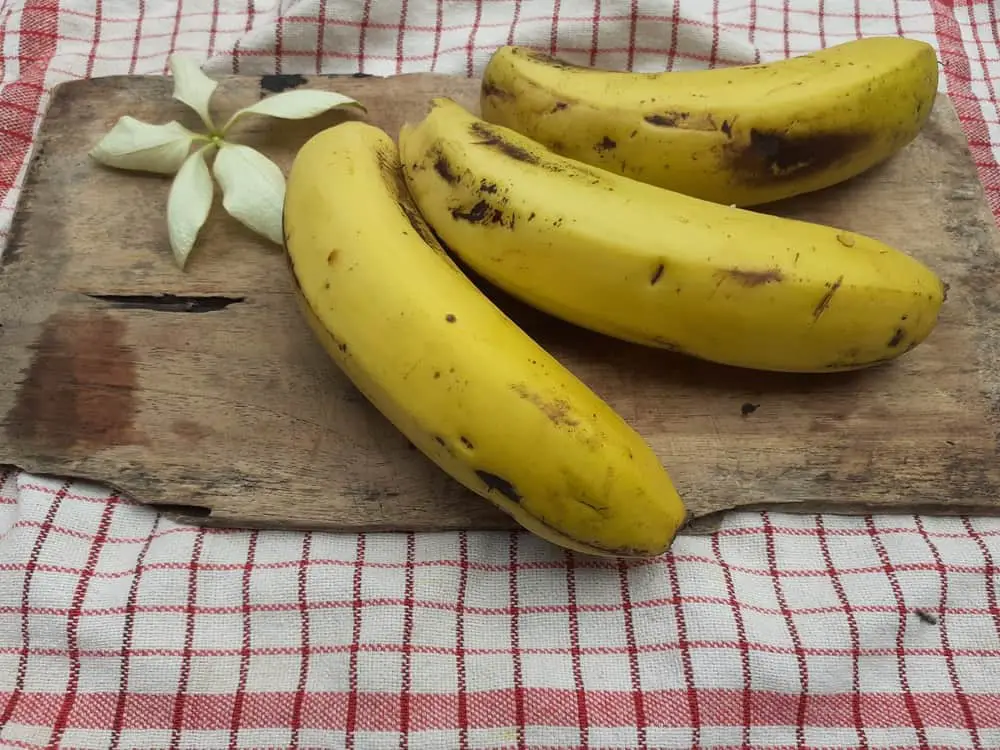
Consider the benefits that banana peels can offer plants in your garden.
Banana peels are organic and amazing sources of potassium, calcium, magnesium, sulfur, and phosphorus for plants.
These nutrients promote a healthy plant with the following benefits:
- Strong root and stem development
- Healthy photosynthesis process
- Improved blooming and seed germination
- Overall health to resist pests and diseases
Many plants like phosphorus-rich banana peels such as tomatoes, peppers, roses, air plants, and staghorn ferns.
Keep in mind that most plants cannot rely on phosphorus (P) alone. They need a healthy balance of nitrogen (N) and potassium (K) as well.
You can test the levels of your soil before using banana peels at your local extension or gardening store.
Signs Of Nutritional Imbalance
Plants that are deficient in phosphorus typically show the following signs:
- Inhibited shoot growth
- Dark, dull, or pale leaves
- Shallow root systems
- Reddish-violet colored leaves (not related to Fall)
Generally, if the soil does not have adequate phosphorus levels the plants will benefit from banana peels.
However, an abundance of phosphorus would result in plants that cannot take up enough of other essential nutrients such as calcium, zinc, and copper.
As a result, the plants will show leaf discoloration with yellow or dark veins. The leaf margins may turn reddish-brown, and the plant will eventually die.
Tips
Organic sources, such as banana peels are generally safer to use as fertilizer rather than synthetic versions since they have lower concentrations.
Consider testing any banana peel methods below on one plant first to see if it is too much or not.
If you wish to save banana peels until you are ready to use them, simply store them in a freezer-safe baggie in your freezer.
Try These 19 Amazing Banana Peel Uses In The Garden
Do not waste those banana peels by throwing them away.
Try the following ways below for using them in your garden.
1. Banana Mulch
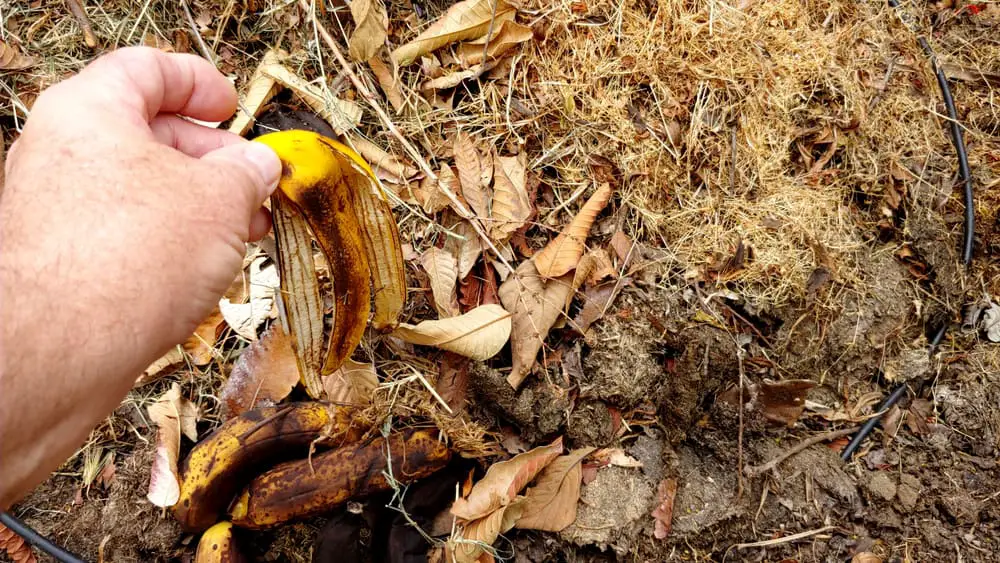
In general, mulch helps to improve the quality and health of your garden soil. It suppresses weeds, invites in beneficial insects and microorganisms, and retains moisture.
This method is quick and easy for those that wish to use a simple method.
To use banana peels as mulch, you can try the following options:
- Put down a single layer of banana peels on top of the soil. Cover them with regular mulch.
- Place them directly on top of the soil, and allow them to decompose in the open air.
Tip: Cut the banana peels into small pieces which will encourage them to break down faster.
Note: This method may invite unwanted pests, such as raccoons and skunks. It is best to bury peels if possible without disturbing the root systems of plants.
2. Dehydrated Slow-Release Fertilizer

Opt for dehydrated banana peels, if you wish to reduce odors. Dehydration can keep away wildlife that wants to feast on rotting banana peels.
If you do not own a dehydrator, you can use your oven.
What To Do
- Cut your banana peels into about ½-inch small pieces.
- Lay them out on a baking sheet so the pieces are not touching.
- Slowly dehydrate them in the oven.
- Optimal drying temperatures are 140 °F to 200 °F degrees, with the door slightly open.
- Check your peels after 5 hours to see if they are crispy all of the way through.
- If they appear scorched, lower the temperature.
- This process could take up to 8 hours.
Note: You can dry your pieces in the sun for at least 5 hours. However, insects and wildlife may be tempted to snack on them.
Once the peels are dehydrated they can be used in a variety of ways:
- As chips to add to your mulch
- Grounded into powder to sprinkle on or added to a spray
- Buried directly into the topsoil
This slow-release banana peel fertilizer can be added every few months.
3. Liquid Spray Fertilizer

Using banana peels as a liquid spray fertilizer offers immediate nutrition to your garden.
There are two recipes that you can try.
Recipe #1
- Cut the banana peels into small ½-inch small pieces.
- Place them into a bucket and cover them with room-temperature water.
- Cover the bucket with a lid to keep flies out.
- Let the peels and water sit for 2 to 3 days while stirring them occasionally.
- Strain the mixture, keeping the liquid.
- Use the liquid to water your plants.
Recipe #2
- Add 4 dried banana peels (using method #2 above), 3 crushed-up eggshells, 1 tablespoon of Epsom salts, and 1 quart of water to a blender.
- Run the blender on high until all ingredients are thoroughly dissolved.
- Pour the mixture into a spray bottle.
- Spray it around the base of your plants.
Note: Take care not to get the spray on the leaves, as the Epsom salt can cause leaf scorch.
4. Banana Slurry
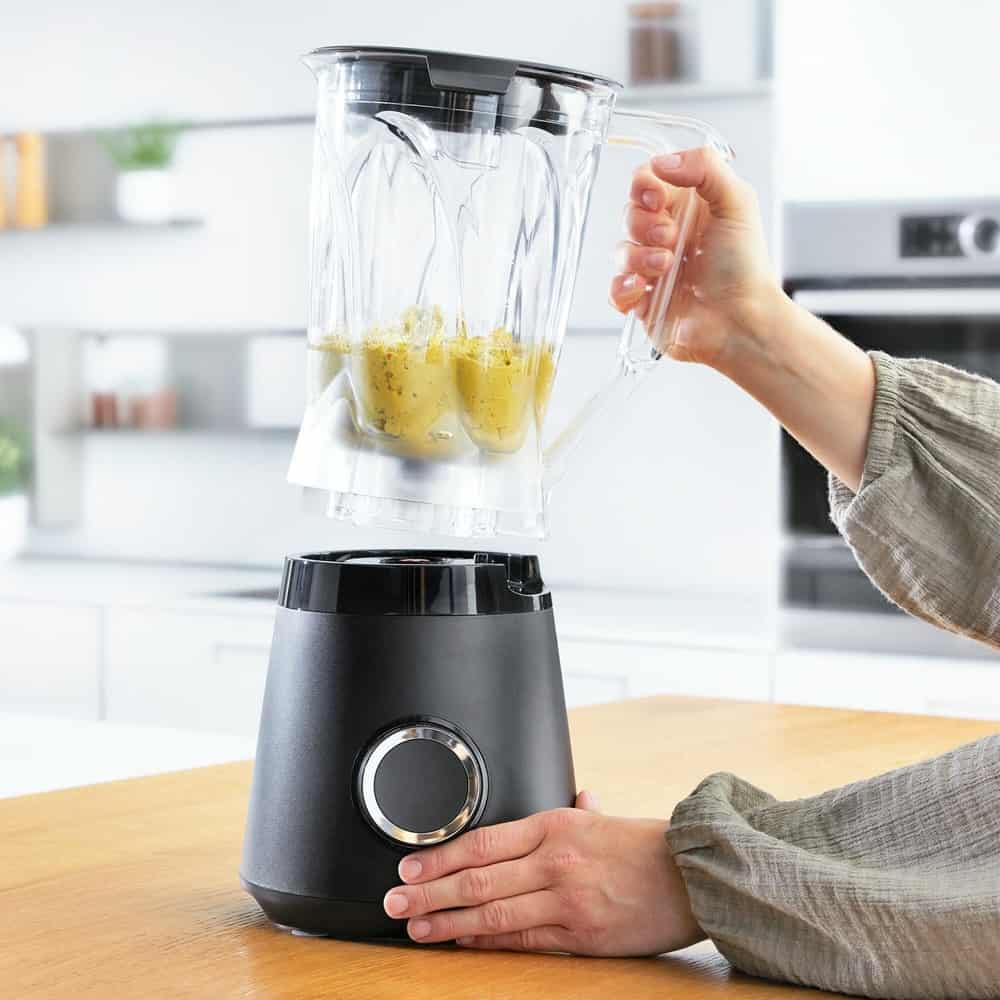
A slurry can be made if you have banana peels left over from another method here, or as a direct method after eating bananas.
What To Do
- Cut 4 banana peels into small pieces, less than 1 inch.
- Put them into the blender and top them off with room-temperature water.
- Let the mixture soak in the blender for at least 30 minutes.
- Run the blender to process them into a slurry.
- Pour this mixture onto the soil around the base of your plants.
- Conversely, you can dig a small trench and put the slurry into it. Cover it back up with soil or mulch.
5. Mason Jar Compost Tea
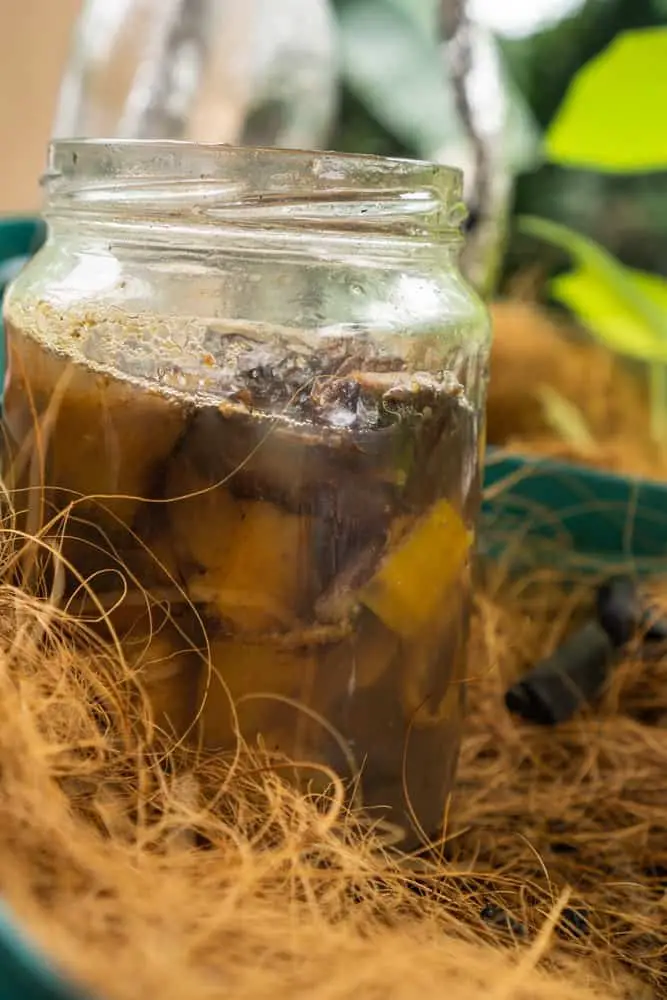
Much like the liquid spray fertilizer above, you can soak banana peels in water.
For this method, all you need to do is the following:
- Soak 1 or 2 banana peels in a mason jar with water. Cover the mason jar tightly with its lid.
- Let it sit for 2 to 3 days at room temperature out of sunlight.
- Remove the lid and the banana peels. Consider putting the banana peels in your compost pile.
- Add the remaining liquid to a spray bottle, or water your plants directly by pouring it out from the mason jar around their bases.
Note: If the banana peels have mold on them, or smell bad, do not use them on your plants.
6. Refrigerator Compost Tea
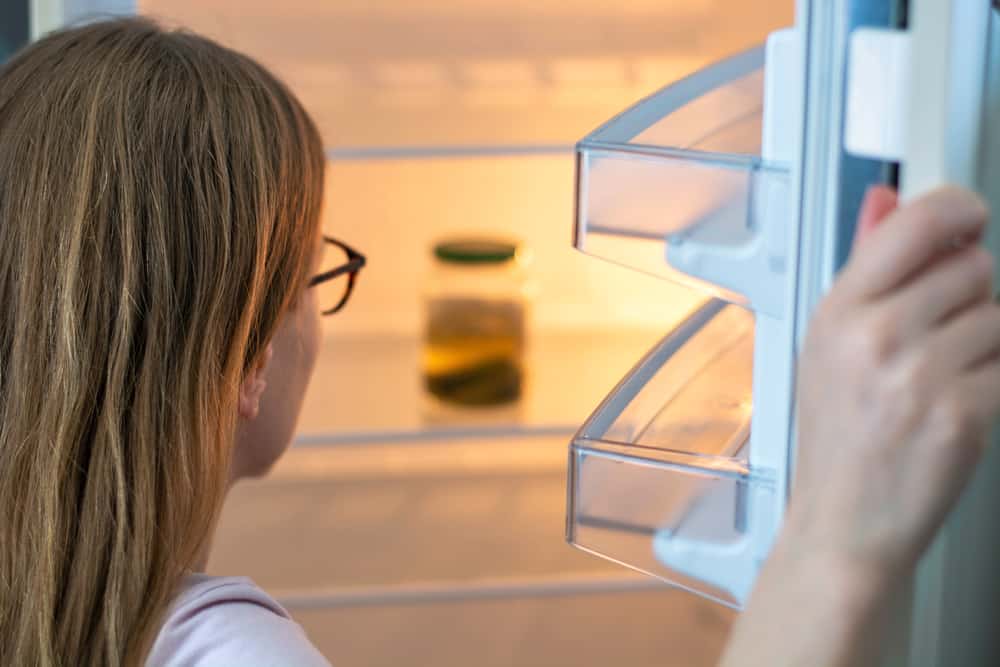
This is not tea for human consumption, but rather a way to collect banana peels throughout the week. This keeps them refrigerated so that they do not spoil as fast.
What To Do
- Fill a lidded large jar (your choice) about three-fourths full with water. Place the jar in the refrigerator.
- When you consume a banana, cut up the peel into small pieces and store them inside the refrigerated jar.
- Do this process over the course of a week.
- Any longer than that, the banana peels may start to turn moldy and therefore unable to be used.
- After a week has passed, follow the process for making a slurry (method #4 above).
7. Banana Vinegar

You can create a banana “vinegar” for acid-loving plants, such as blueberries. The finished product should be sprayed onto the soil to avoid leaf burn.
This video demonstrates how to make banana vinegar:
8. Air Plant Fertilizer
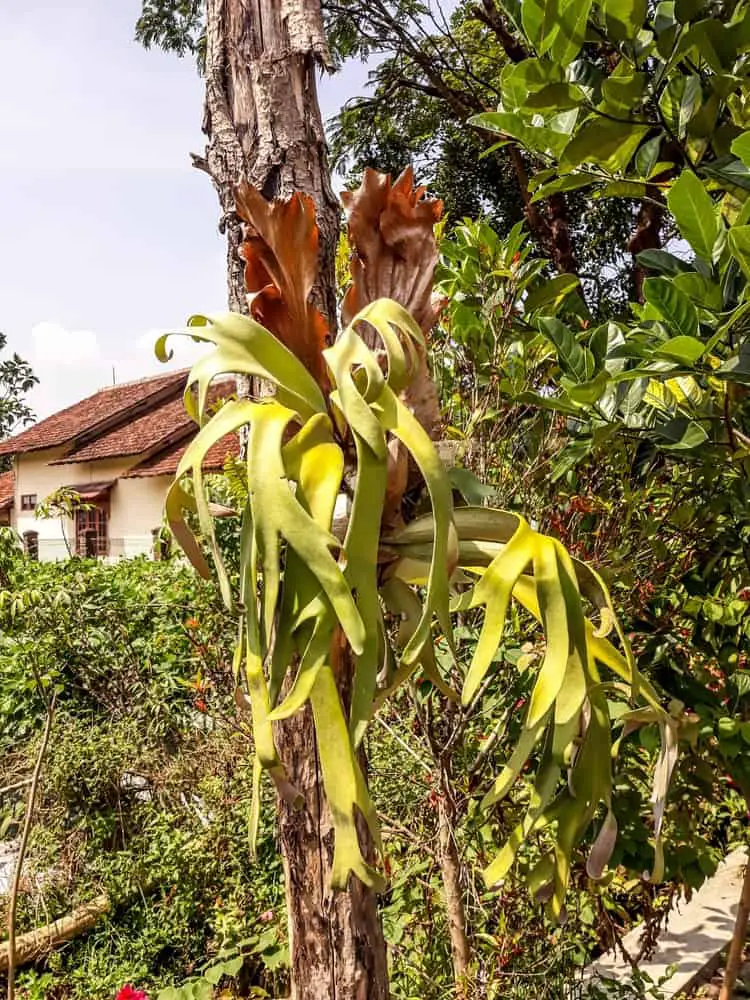
Air plants such as staghorn and elkhorn ferns do not have roots that grow in soil. They obtain nourishment from the surrounding air instead.
When displayed in the home, air plants typically sit on a base of moss or woody materials.
To feed your air plants bananas, try any of the following methods using the directions above:
- Spray (methods #3, 5, 6)
- Slurry (method #4)
- Mixed in with the base (methods #1, 2)
9. Seed Starter
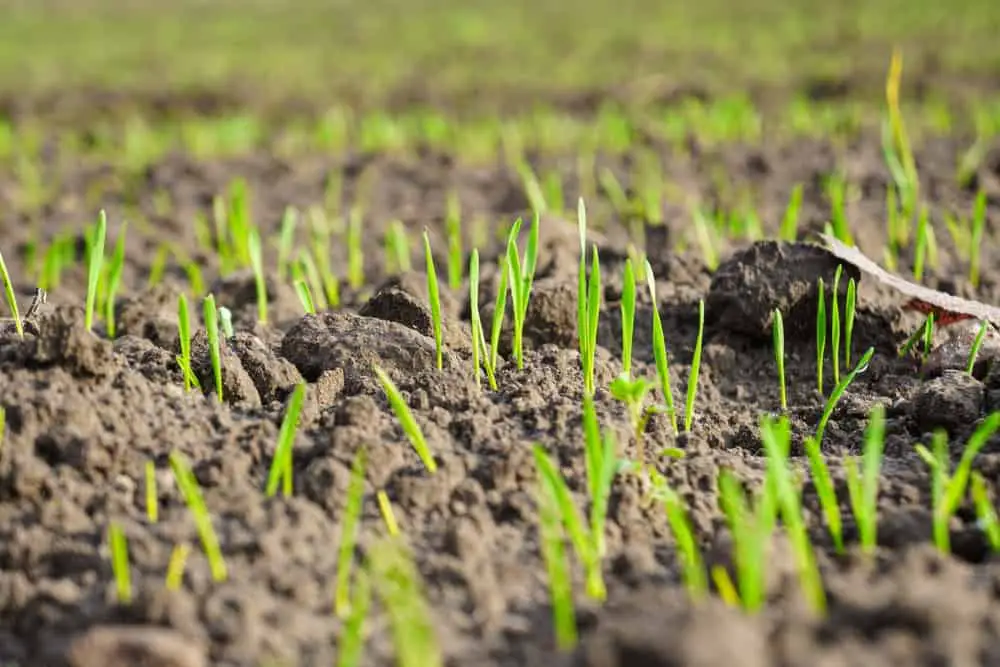
You can feed newly planted seeds directly using banana peels.
What To Do
- Dig a trench where you intend to plant the seeds at least 2 inches deep.
- Consider how deep your seeds need to be planted, and adjust accordingly.
- Lay down strips of banana peels with the interiors of the peels facing up.
- Place your seeds directly on top of the peel, spacing them accordingly to package instructions.
- Cover and water your seeds according to their directions.
10. Seedling Nutrition
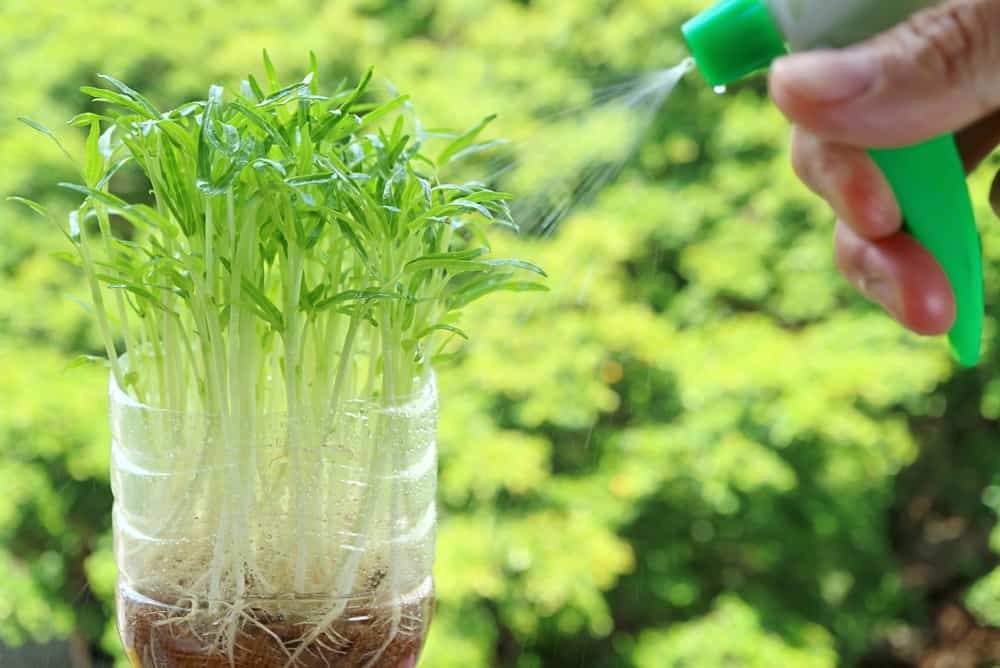
Banana peels can also help provide nutrition to growing seedlings. Dehydrated and powdered peels work best for this.
Simply add a pinch of banana powder or a few chips to the surrounding soil.
You can use cut-up pieces of peels or a slurry buried in the soil near the base of seedlings as well. Take care not to disturb their delicate root systems.
You can also gently spray them with banana teas and mixtures, taking care not to directly spray the developing stems and foliage.
11. Rose Bloom Booster

Roses love the benefits that banana peels offer them as sources of calcium, magnesium, sulfur, and phosphates. Banana peels can help roses stay healthy and have bright, beautiful blooms.
You can give roses banana nutrition by burying pieces of peel in the soil, using them as mulch, or sprinkling on dehydrated banana peel powder.
Sprays and liquids work well also but may need to be reapplied more often.
12. Non-Toxic Aphid Repellent

If aphids are a problem, use banana peels as a non-toxic option to help deter them.
You can directly spray the leaves of the plants. Consider testing the spray on a few leaves to see if any leaf scorch occurs.
If this method does not work, you may need to try other organic ways to deter insects.
13. Insect Trap

Banana peels are an attractive source to insects such as fruit flies and gnats.
You can use peels as a non-toxic way to trap and get rid of them.
What To Do
- Cut the peels into small pieces and place them into a recycled and small-lidded plastic container (e.g. yogurt containers, margarine tubs, etc.).
- Pour in some apple cider vinegar. Use at least enough to lightly cover the peels.
- Poke 3 to 6 holes into the lid, and secure the lid to the container.
- Insects will enter the holes and then ultimately drown in the liquid.
14. Attract Birds And Butterflies

Many insects and wildlife love the scent of banana peels, including birds and butterflies.
If you wish to attract more birds and butterflies to your garden, place ripe peels ideally on a raised platform. Consider hanging them if you do not have a raised platform.
Keep in mind that banana peels are also attractive to bees, caterpillars, wasps, skunks, and raccoons, so use caution when leaving these out.
15. Vermiculture
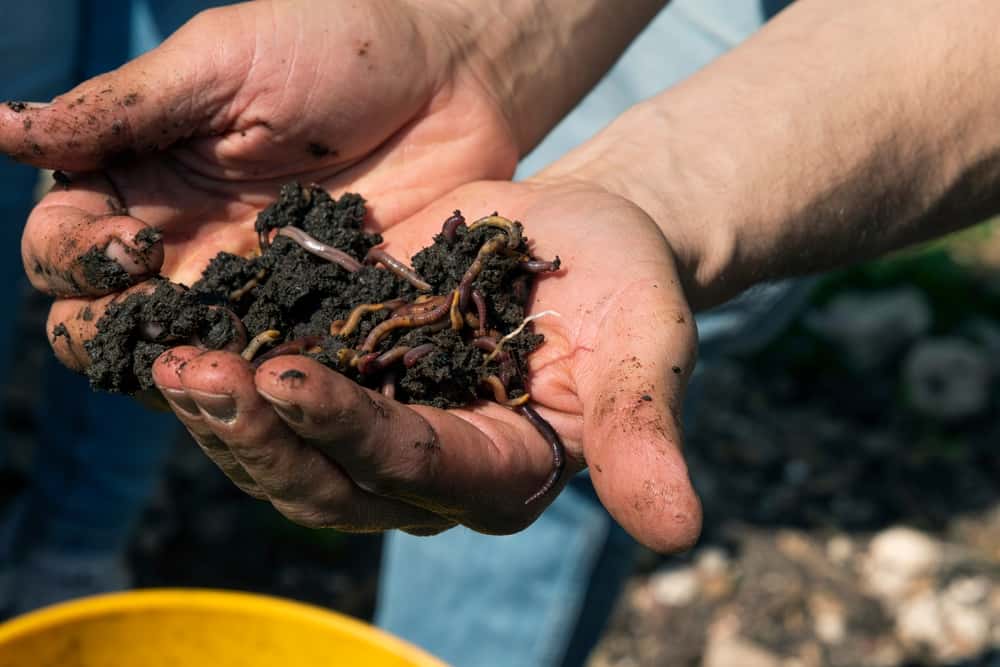
Vermiculture, also known as worm farming, is when earthworms are used as a natural process to convert organic waste into nutrient-rich compost.
By adding whole or cut-up banana peels to your worm farm, you are adding in nutrition, and letting the worms do the work.
16. Bokashi Composting
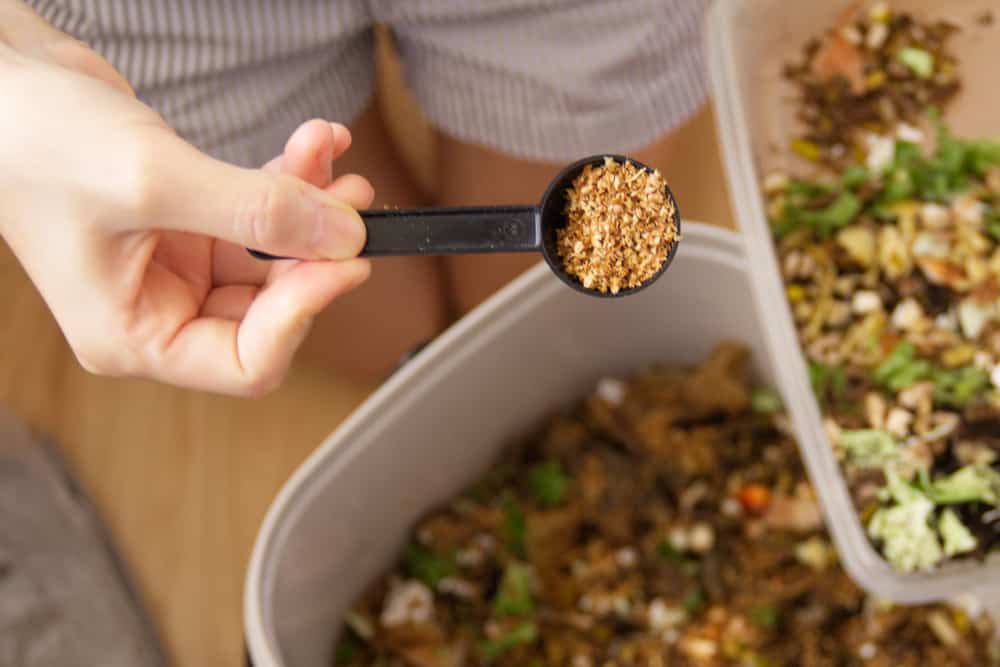
Bokashi is a Japanese term referring to fermented organic matter without the use of oxygen. This method uses a specialized bokashi bucket and bran.
Bokashi converts organic matter, such as banana peels, egg shells, and other organic waste, into a soil amendment. This amendment improves soil structure and adds nutrients.
17. Compost Bin Additive
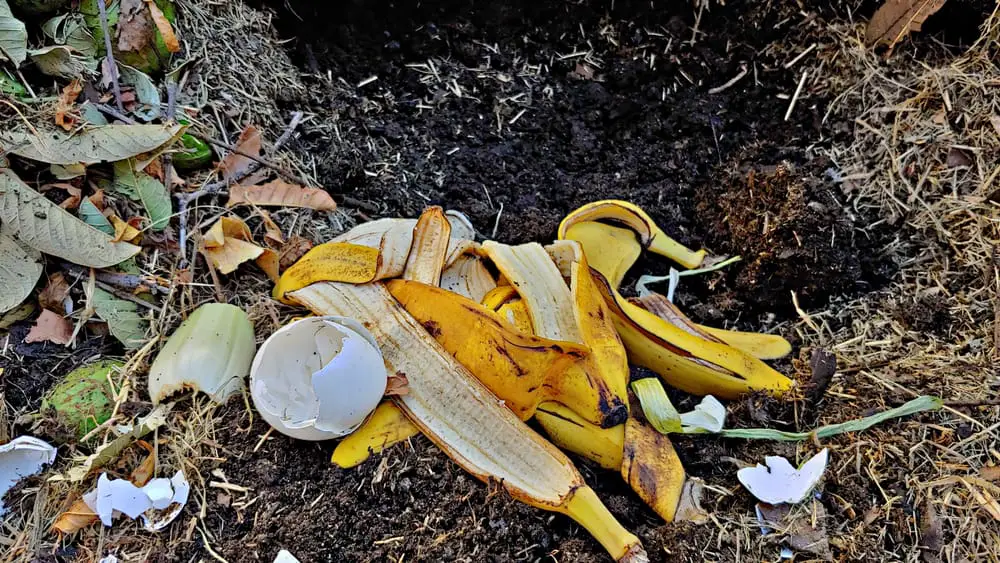
If you are a composter, you can simply add banana peels to your compost pile. Mixed in with other organic waste, such as coffee grounds and eggshells you will end up with nutrient-rich compost.
If you wish to reduce visits from wildlife, cut and bury, or slurry, the banana peels. Ideally, covered composts are the best for keeping creatures out.
18. Soil Amendment
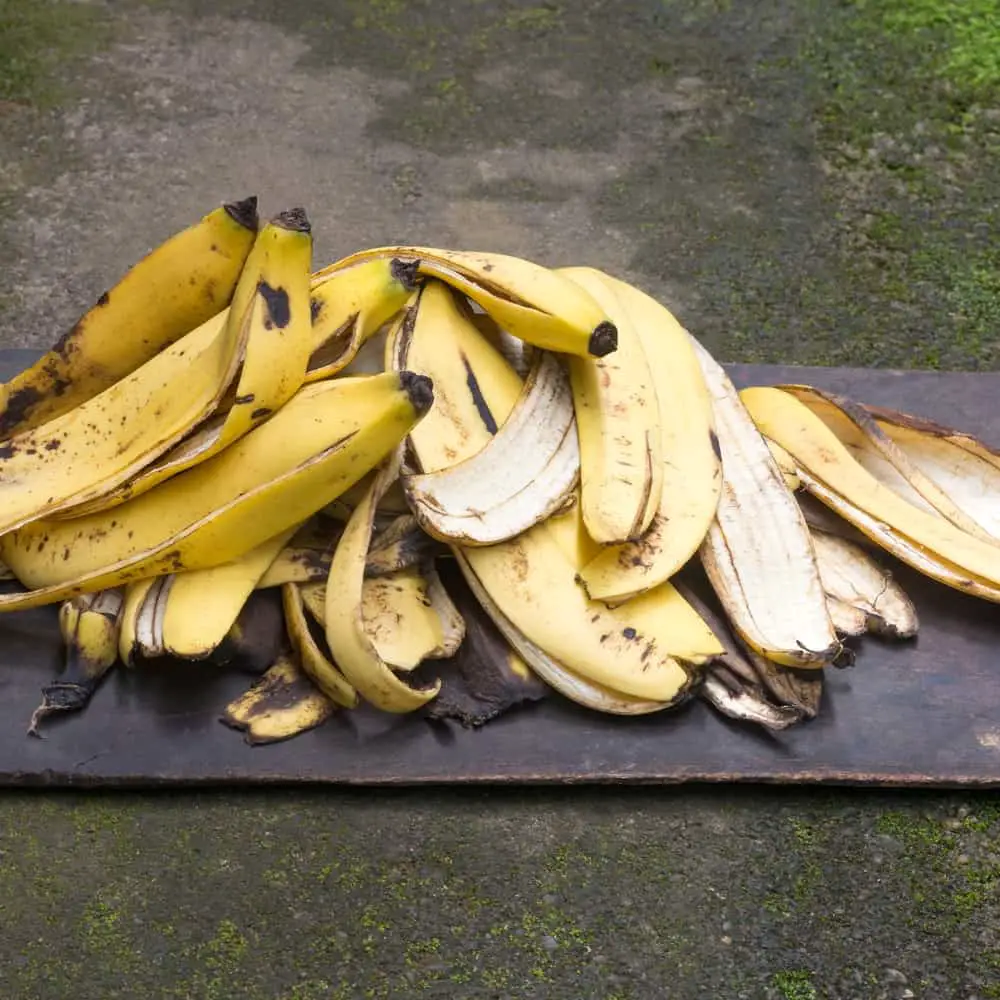
You can fortify your garden bed by amending the soil.
Before planting, dig a trench about 3 inches deep. Lay the banana peels flat into the trench, with the interior facing up.
Cover it with soil, and it will decompose over time, releasing nutrients into the soil. The peels will boost microbial growth and beneficial earthworms will aerate the mixture.
If you wish for the peels to decompose faster, cut them up into small pieces before placing them into the trench.
19. Winter Bed Prep
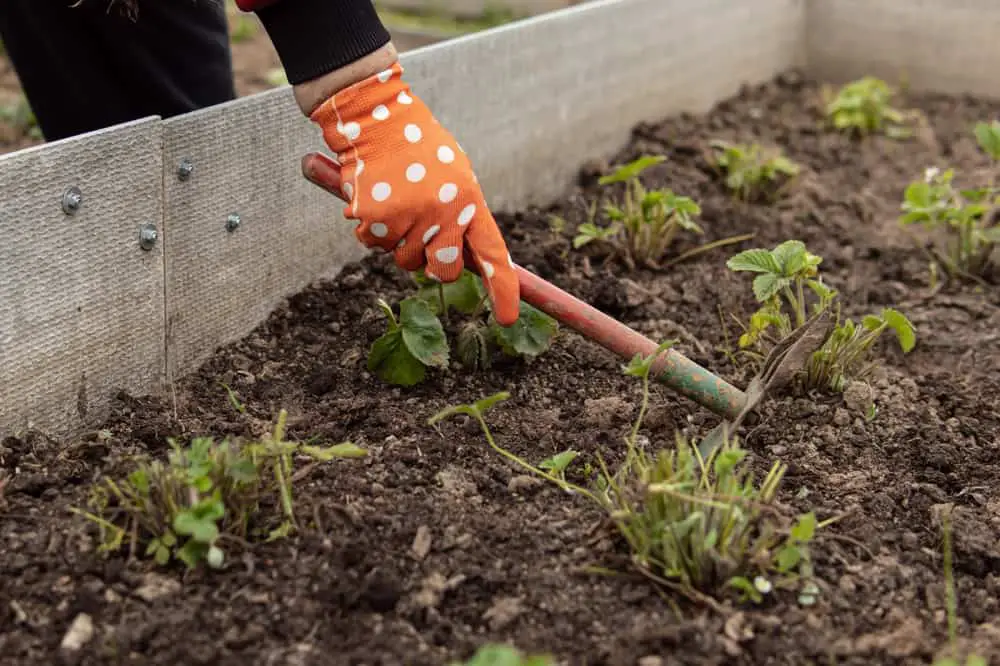
Soil amendment can also be done after harvesting, before winter, while the ground is still soft. Over winter and into the spring, the peels have plenty of time to decompose.
Make sure you bury the peels completely to keep wildlife away.
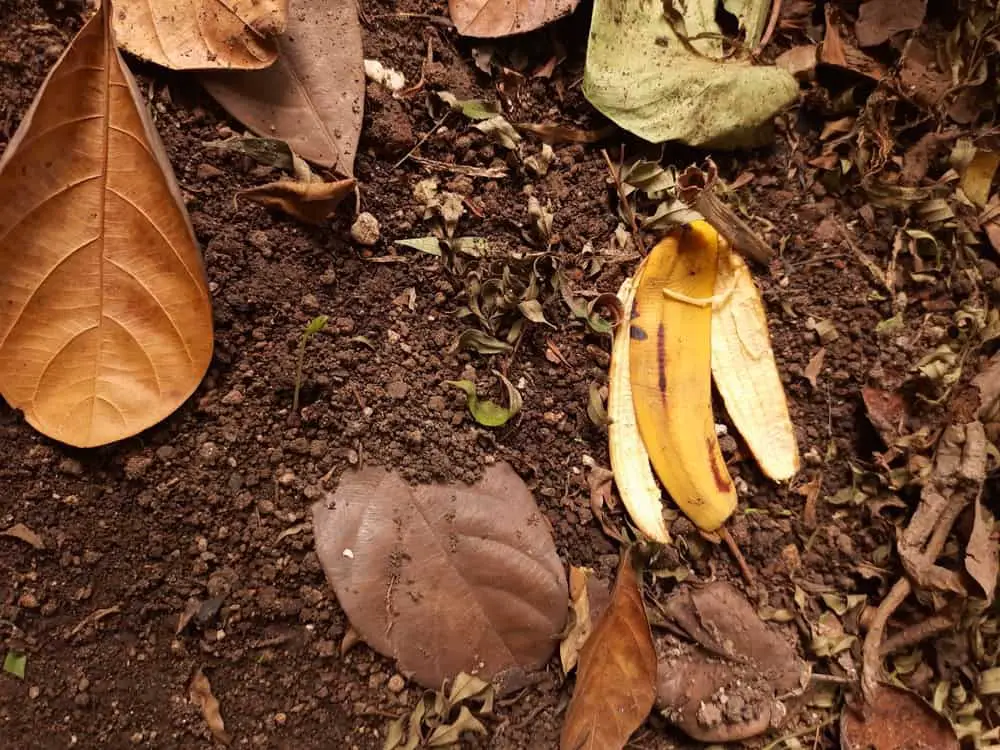
Wrapping Up
As you can see, banana peels are a natural and beneficial way to boost your garden’s soil and plants with nutrition for healthy growing seasons.
Peels can be used to repel or trap some insects, and also to invite in beneficial pollinators such as birds and butterflies.
